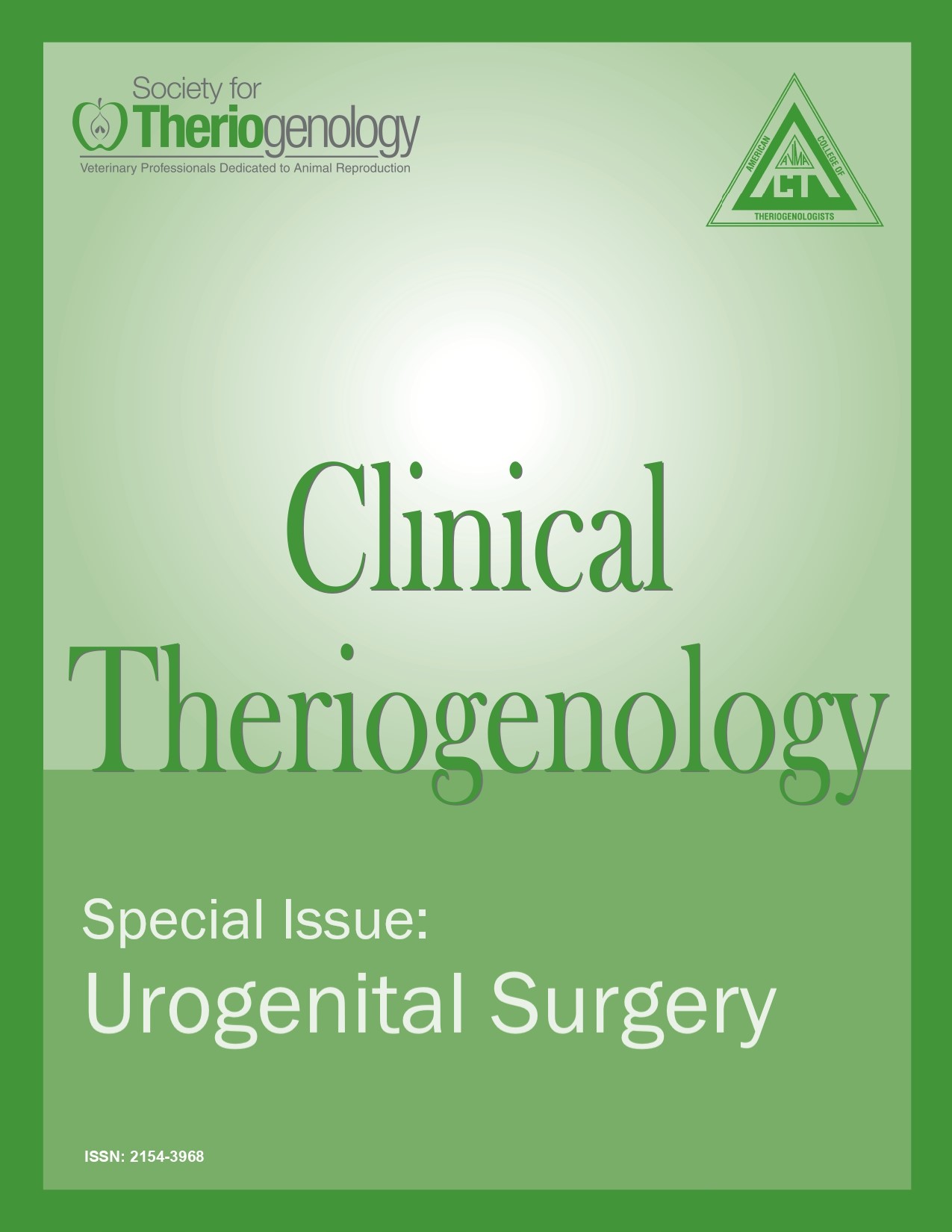Surgical management of bovine inguinal herniation
Abstract
Inguinal herniation is not a rare occurrence in cattle, there are on average one to two cases per year in the authors’ experience, and surgical management is required if the goal is correction of the problem. Bovine inguinal hernias are classified as either congenital or acquired. Acquired hernias are further differentiated as direct or indirect depending on pathogenesis and whether or not there is damage to the tunic. Two surgical approaches are described below and can be successfully utilized for repair. Following surgery and recovery, bulls often return to breeding without incident.
Downloads
References
2. Hopper R, King H, Walters K, et al: Management of urogenital injury and disease in the bull: the scrotum and its contents. Clin Theriogenol 2012;4:332–338.
3. Wolfe DF: Unilateral castration for acquired conditions of the scrotum. In: Wolfe DF, Moll HD: editors. Large Animal Urogenital Surgery. 2nd edition, Baltimore, MD; Williams and Wilkins: 1998. p. 313–320.
4. Wolfe DF, Rodning SP: Diagnosis and management of inguinal hernia in bulls. In: Anderson DE, Rings DM: editors. Food Animal Practice. 5th edition, St. Louis, MO; Saunders, 2009, p. 356–359.
5. Riddell MG, Powe TA, Pugh DG: Developmental anomalies of the scrotum and testes. In: Wolfe DF, Moll HD: editors. Large Animal Urogenital Surgery. 2nd edition, Baltimore, MD; Williams and Wilkins: 1998. p. 283–294.
6. Wolfe DF: Surgery of the scrotum and its contents. In: Hopper RM: editor. Bovine Reproduction. 1st edition, Wiley: 2015. p. 136–141.

This work is licensed under a Creative Commons Attribution-NonCommercial 4.0 International License.
Authors retain copyright of their work, with first publication rights granted to Clinical Theriogenology. Read more about copyright and licensing here.





